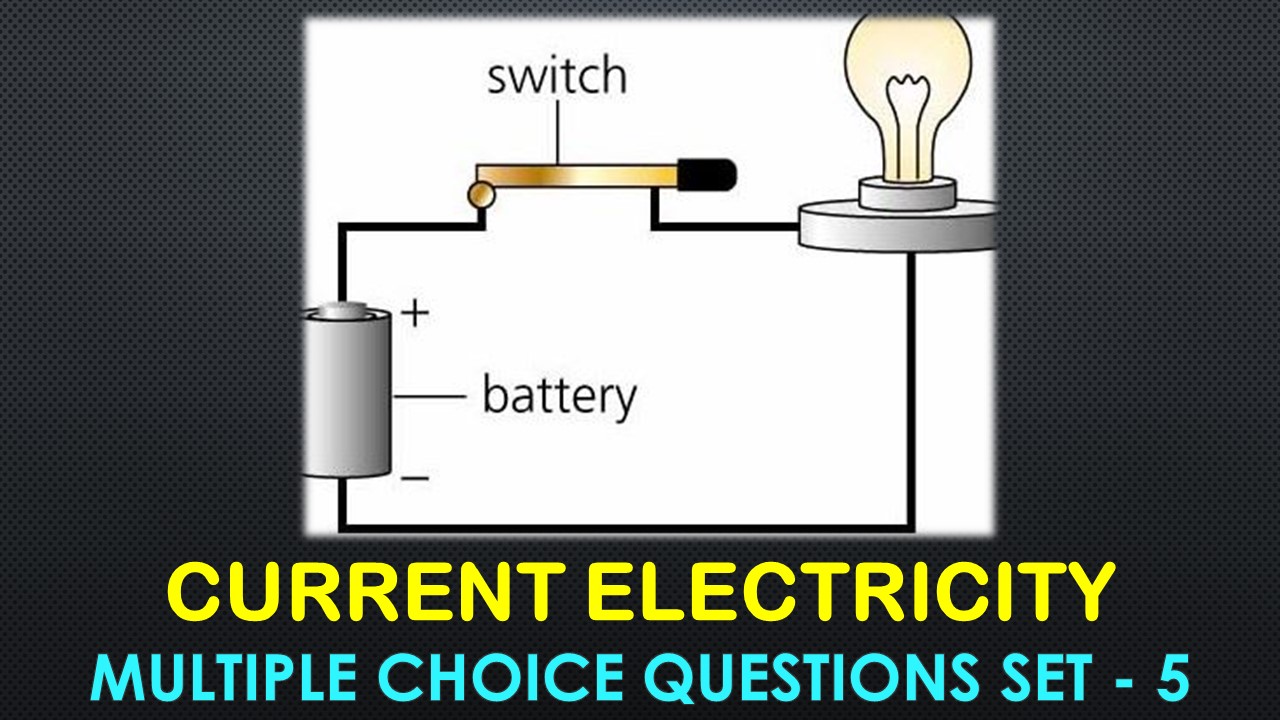CBSE Class 12 Current Electricity Multiple Choice Questions with Answers. MCQ Questions Class 12 Current Electricity with Answers Is Prepared Based on Latest Exam Pattern. Students can solve NCERT Class 12 Current Electricity MCQs with Answers to know their preparation level.
Students who are searching for NCERT MCQ Questions for Class 12 Current Electricity with Answers are compiled here to get good practice on all fundamentals. Know your preparation level on MCQ Questions for Class 12 Current Electricity with Answers. You can also verify your answers from our provided MCQ Class 12 Current Electricity with Answers. So, ace up your preparation with MCQ of Class 12 Physics Examinations.
MCQ Questions Class 12 Current Electricity with Answers - Set - 5
Question 1:
Which of the following has a negative temperature coefficient of resistance ?
(a) Tungsten
(b) Carbon
(c) Nichrome
(d) Platinum
Correct Answer – (B)
Question 2 :
In an experiment with potentiometer, null point with a cell is found at 240 cm. When the cell is shunted with a resistance 2 Ω, the null point becomes 120 cm internal resistance of cell is :
(a) 4 Ω
(b) 2 Ω
(c) 1 Ω
(d) 1/2 Ω
Correct Answer – (A)
Question 3 :
The phenomenon of super-conductivity was discovered by :
(a) Ohm
(b) Onnes
(c) Edison
(d) None of these
Correct Answer – (B)
Question 4 :
Copper wire is used as connecting wire because :
(a) copper has high electrical resistivity
(b) copper has low electrical resistivity
(c) copper has low electrical conductivity
(d) copper has high value of elasticity
Correct Answer – (B)
Question 5 :
How many joules are equal to I kWh ?
(a) 3.6 × 104
(b) 3.6 × 105
(c) 3.6 × 106
(d) None of these
Correct Answer – (C)
MCQ Questions Class 12 Current Electricity with Answers
Question 6 :
Two conductors of equal length and radii the ratio of 2 : 3 are; connected in parallel the source of electricity. The ratio of the velocity of electrons in the conductor be :
(a) 2 : 3
(b) 4 : 9
(c) 1 : 1
(d) 3 : 2
Correct Answer – (C)
Question 7 :
The specific resistance of a conductor increases with :
(a) increase in temperature
(b) increase in cross-sectional area
(c) decrease in length
(d) decrease in cross-sectional area
Correct Answer – (A)
Question 8 :
The heat sensitive device whose resistivity changes very rapidly with change of temperature is called a :
(a) resistor
(b) super-conductor
(c) thermocouple
(d) thermistor
Correct Answer – (D)
Question 9 :
The temperature coefficient of resistance is expressed in :
(a) °C
(b) °C-1
(c) m°C-1
(d) None of these
Correct Answer – (B)
Question 10 :
1 kilowatt hour is commonly known as :
(a) unit
(b) 1 faraday
(c) 1 curie
(d) None of these
Correct Answer – (A)
- NCERT Solutions Class 11 Chemistry Chapter 1 : Some Basic Concepts of Chemistry
- NCERT Solutions Class 11 Chemistry Chapter 2 : Structure Of The Atom
- NCERT Solutions Class 11 Chemistry Chapter 3 : Classification of Elements and Periodicity in Properties
- NCERT Solutions Class 11 Chemistry Chapter 4 : Chemical Bonding and Molecular Structure
- NCERT Solutions Class 11 Chemistry Chapter 5 : States of Matter
- NCERT Solutions Class 11 Chemistry Chapter 6 : Thermodynamics
- NCERT Solutions Class 11 Chemistry Chapter 7 : Equilibrium
- NCERT Solutions Class 11 Chemistry Chapter 8 : Redox Reactions
- NCERT Solutions Class 11 Chemistry Chapter 9 : Hydrogen
- NCERT Solutions Class 11 Chemistry Chapter 10 : The s-Block Elements
- NCERT Solutions Class 11 Chemistry Chapter 11 : The p-Block Elements
- NCERT Solutions Class 11 Chemistry Chapter 12 : Organic Chemistry: Some Basic Principles and Techniques
- NCERT Solutions Class 11 Chemistry Chapter 13 : Hydrocarbons
- NCERT Solutions Class 11 Chemistry Chapter 14 : Environmental Chemistry




